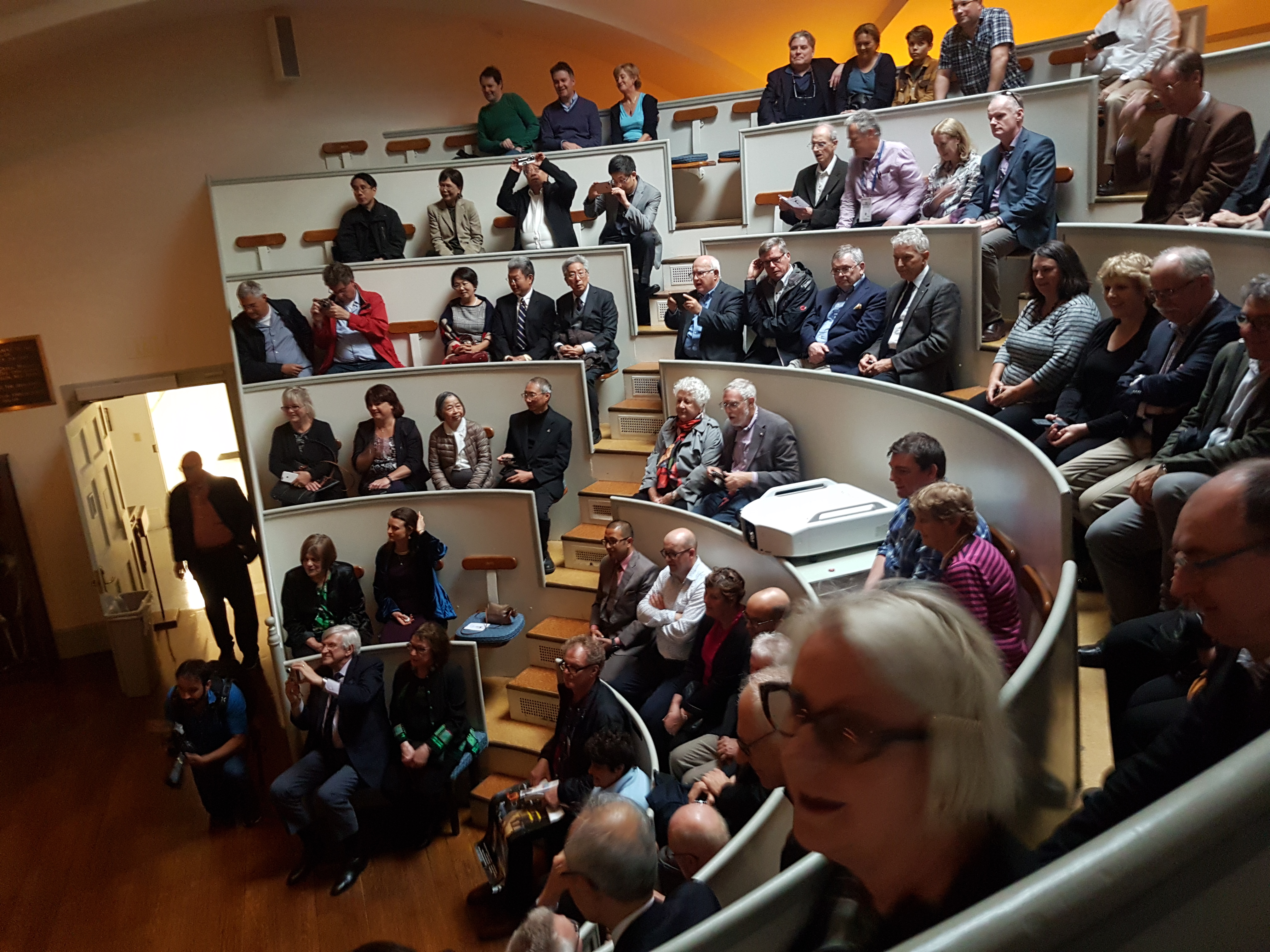A conference’s opening reception is often an indication of how well the whole event will come together. At the 9th International Symposium on the History of Anaesthesia (ISHA), the opening reception was held at the famous Ether Dome at Massachusetts General Hospital. This is an internationally significant site in the history of medicine and it was a thrill to be in the very place where the first successful public demonstration of ether anaesthesia was performed. Quite the auspicious start.

One of the new features for this ISHA was a series of presentations from museums with a focus on anaesthesia history. There were three of these sessions, with two or three museums in each of them.
The Geoffrey Kaye Museum kicked off this series with a discussion about achieving accreditation, what it looked like for the museum, and how it has impacted our current practice. It was followed by a fabulous presentation from Thomas Peyne of the Dräger Collections. Thomas provided a very timely reminder of the importance of that “behind the scenes” work, which renders a collection readily searchable, enabling it to provide valuable assistance to researchers.
We also heard from the Crawford W Long Museum and the way they have reinvented themselves as more than a museum with a niche narrative, but as a site for community activities and programs. The strong relationship they’ve built with their immediate community is a way of ensuring their longevity by being relevant to their community.
The Wood Library Museum has embarked on an extraordinary digitisation project, hoping to make as much material, particularly audiovisual material, available online as possible. Of course, they are facing the usual issues of copyright, privacy and permissions, but doing so in a systematic way that will continue to see their collection, and research on their collection, flourish.
It was especially exciting to listen to Dr Danielle Huckle from the Mushin Museum. Most of the other museums that presented had professionally trained museum, library or archive staff. The Mushin doesn’t. Dr Huckle takes on a lot of the responsibility for running the museum, and the complex task of doing that when the space used to house the museum is a multipurpose space within a very busy university hospital, and she has a surgical list to deal with. Cleverly accessing funding opportunities for cultural heritage projects in the UK, she has also been able to provide paid summer internships. These interns have been able to provide a new perspective, and complete distinct projects which further the museum’s goals. As is sometimes the case, these interns have stayed on beyond their agreed term and are still a valuable resource for the museum. The museum also offers interns the opportunity to travel to other sites of medical heritage such as the Wellcome Collection, the Hunterian (although that’s currently closed) and the AAGBI Anaesthesia Heritage Centre.
There’s great value for a museum in looking at what other museums of a similar nature are doing. There’s always associated issues with budgets, scope and staffing, but they are endless sources of inspiration and generally welcome a curious, critical eye being cast over their operations. The way another museum presents itself to the public and puts on an exhibition can inspire curatorial choices, even if that other museum has a healthy endowment to draw from, while you have a mere pittance.
So, cheers to all the museums that presented at ISHA. Thank you for taking the time and making the effort to come to Boston and share your work.
It was an absolute privilege and joy to hear about their work, and the various ways in which they are going about the business of preserving, collecting and exhibiting the material and intangible culture of anaesthetic history.
